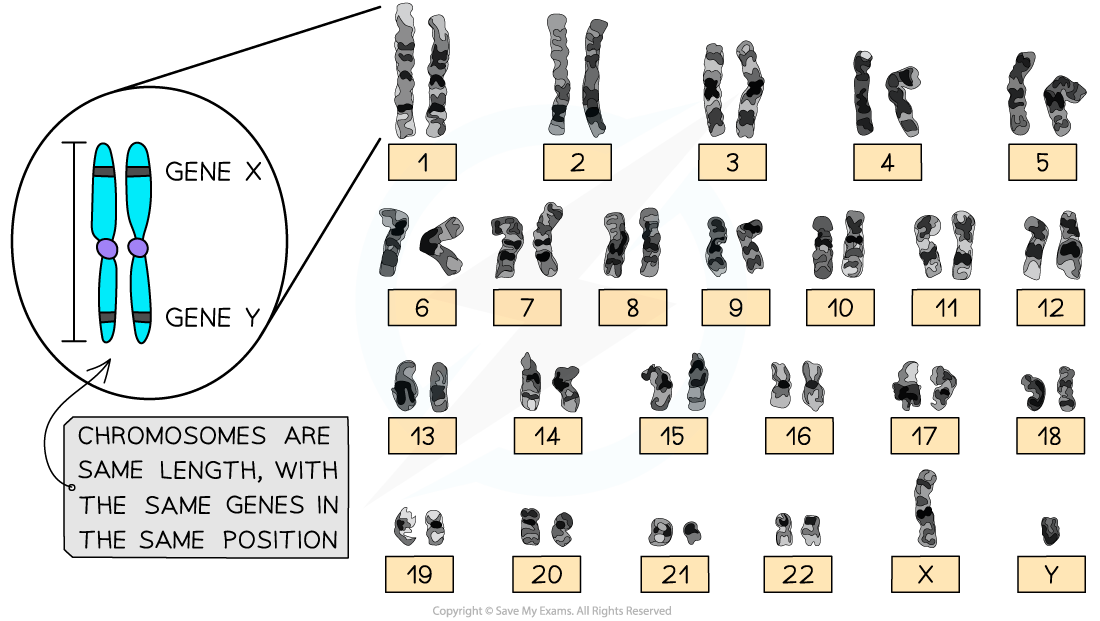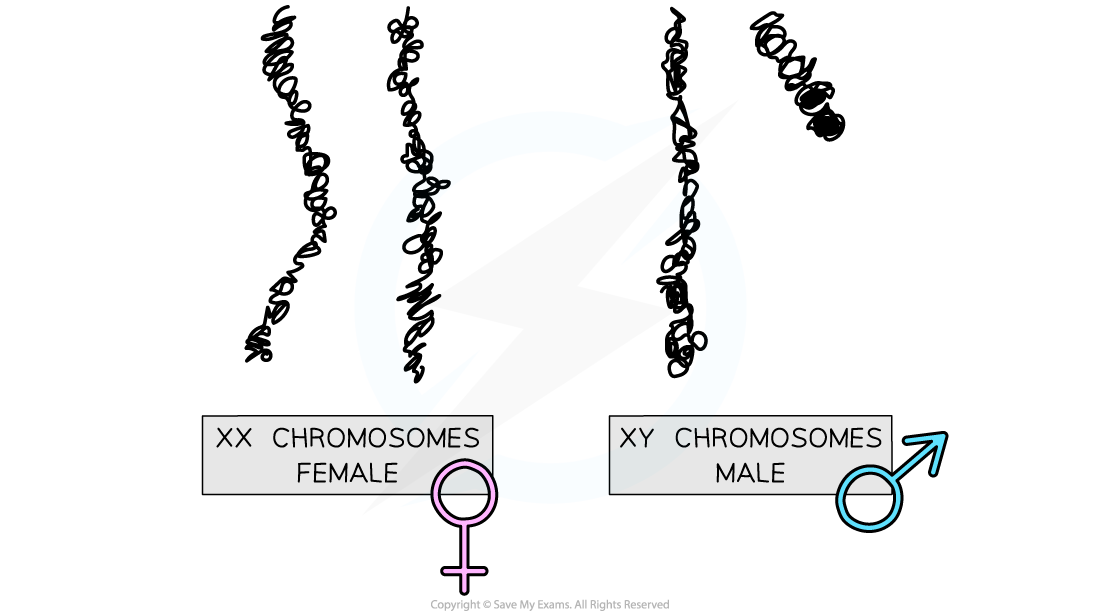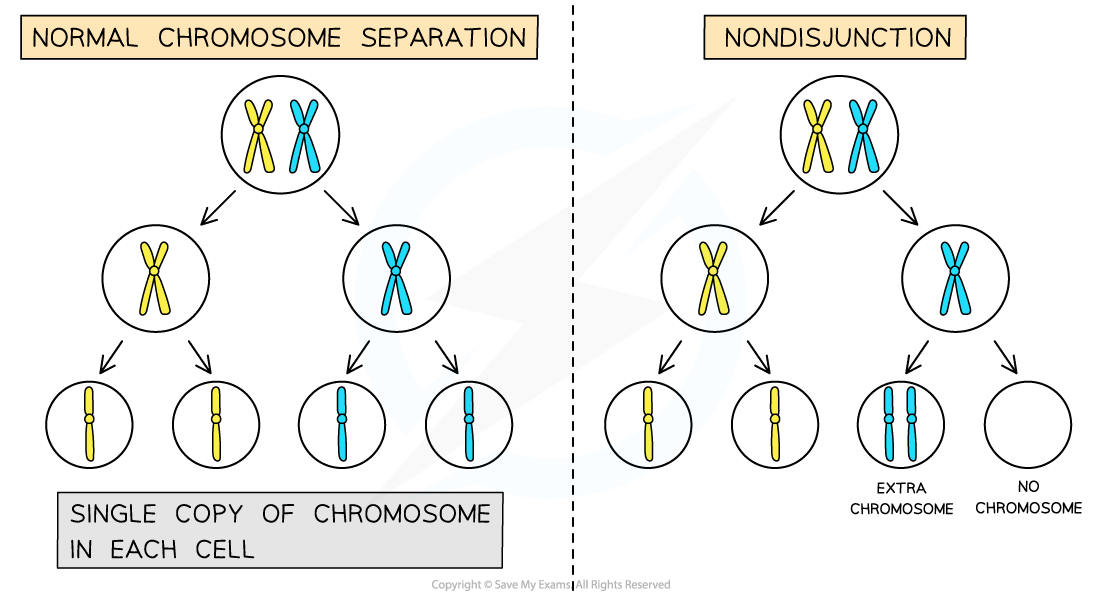Karyograms
- During the stages of mitosis, chromosomes condense (become visible)
- This is most notable in metaphase
- Staining can reveal distinctive banding patterns on chromosomes at this stage
- The position of the centromere will also give a clue about which homologous pair a chromosome belongs to
- The process can be frozen in time using computer image analysis of all the chromosomes
- Chromosomes can be placed in their homologous pairs
- A karyogram will show all the chromosomes in homologous pairs, starting with the longest pair and ending with the shortest

Human karyogram showing homologous chromosomes. The presence of XY reveals this to be a male.
Use of Karyograms
Use of karyotypes to deduce sex in humans
- Karyograms can be used to examine an individual's karyotype
- This can reveal the sex of an individual by the appearance of the sex chromosome pair
- A Y chromosome is considerably shorter than an X chromosome
- XX chromosomes mean an individual is female
- XY chromosomes mean an individual is male

Appearance of the XX and XY chromosomes. Note the Y chromosome is much shorter than the X.
Use of karyotypes to diagnose Down syndrome in humans
- Mutations can occur at different levels, not just mis-copying of individual DNA bases
- Chromosome mutations involve a change in the number of chromosomes
- A spontaneous chromosome mutation called non-disjunction occurs when chromosomes fail to separate during meiosis
- The gametes may end up with one extra copy of a particular chromosome or no copies of a particular chromosome
- These gametes will have a different number of chromosomes compared to the normal haploid number
- Many such gametes will form a non-viable embryo that aborts before becoming a foetus, but not always
- If the abnormal gametes combine in viable fertilization (one that leads to a live birth), then a chromosome mutation occurs as the diploid cell will have the incorrect number of chromosomes
- An example of chromosome mutation is Down syndrome
- Individuals with Down syndrome have a total of 47 chromosomes in their genome as they have three copies of chromosome 21
- Down syndrome is also called Trisomy 21
- Symptoms include distinctive facial features, hearing loss, learning and growth impairment

Image showing how chromosomes failing to separate properly during meiosis can result in gametes with the incorrect number of chromosomes
